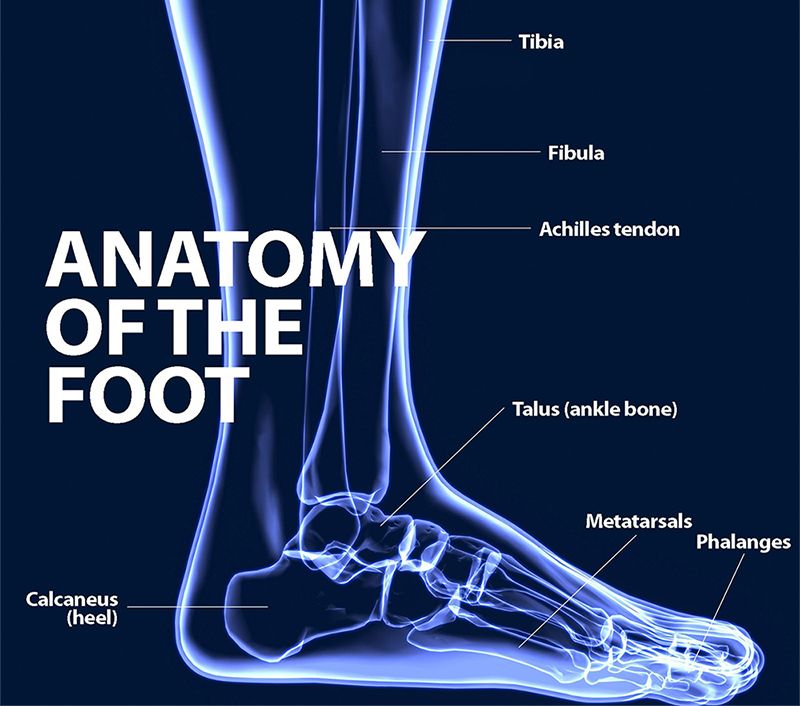The ankle and foot are incredibly complex, with a variety of connecting bones, ligaments, tendons, and muscles. The ankle is the joint where the foot where the foot attaches to the bones of the lower leg, allowing the foot to move both up and down and side to side. It is the hinge that must support your body weight and take the impact when you walk, run, or jump. The ligaments, tendons, and muscles provide stability and balance. Any injuries or weakness to any of the parts of the ankle will upset your gait and ability to walk smoothly and pain-free.
Bones and Joints of the Ankle
The ankle is made up of two joints: The ankle joint and the subtalar
joint. The ankle joint includes two bones (the tibia and the fibula)
that form a joint that allows the foot to bend up and down. This is also
called the ankle joint proper or the talocrural joint. It is a synovial
hinge joint.
Two bones of the foot (the talus and the calcaneus) connect to make the
subtalar joint that allows the foot to move side to side. The tarsal bones connect to the 5 long bones of the foot - the metatarsals.
The bony protrusions on the sides and back of the ankle are called
malleolus. The medial malleolus is on the inside of your ankle, the
lateral malleolus is on the outside of your ankle and the posterior
malleolus is on the back of your ankle.

Ligaments and Tendons of the Ankle
The large Achilles tendon is the most important tendon for walking,
running and jumping. It attaches the calf muscles to the heel bone to
allow us to push off and up on the toes. A tear or rupture to the Achilles is bad news, with a long recovery. There are another 12 tendons that cross the ankle. They are responsible for movements of the ankle, foot and toes; some of these tendons also help support the arches of the foot.
When you sprain your ankle, you have injured one of the ligaments. The most common sprain is to the anterior talofibular ligament. The calcaneofibular ligament is also one that is injured in an ankle sprain.
Muscles of the Ankle
The muscles of the foot are classified as intrinsic and extrinsic. The
intrinsic muscles are located within the foot and cause movement of the
toes and are flexors (plantar flexors), extensors (dorsiflexors),
abductors, and adductors of the toes. Several intrinsic muscles also
help support the arches of the foot.
The extrinsic muscles are located outside the foot, in the lower leg.
The gastrocnemius muscle (calf) is the largest. They have long tendons
that cross the ankle, to attach to the bones of the foot and assist
movement.

Contact
Website: www.pusm-medical.com
Email: info@pusm-medical.com
Tel: +86-24-2351 9517
WhatsApp: +86 139 9812 4587